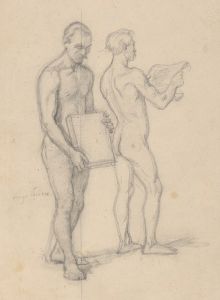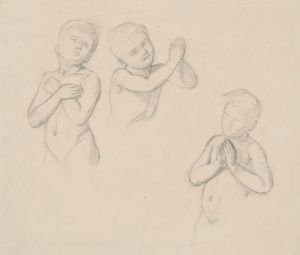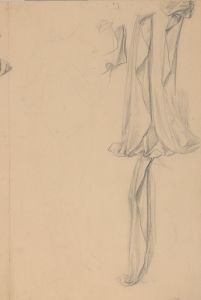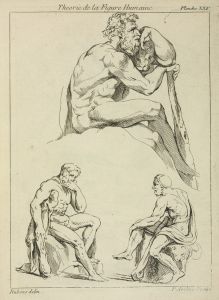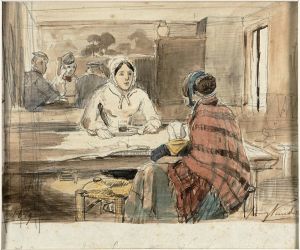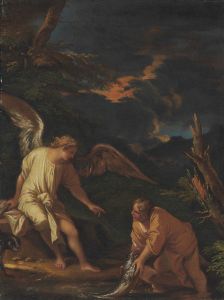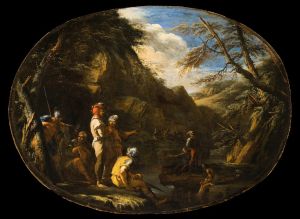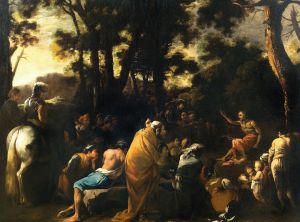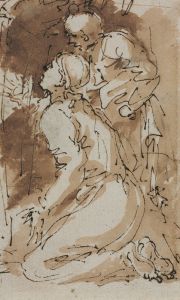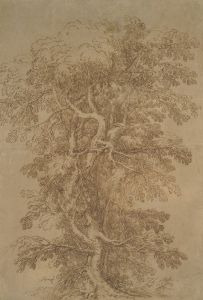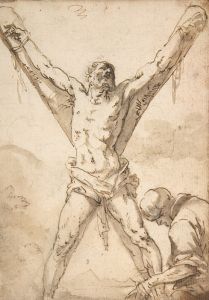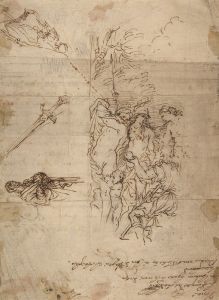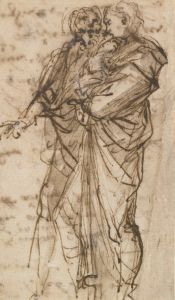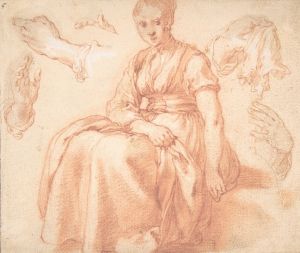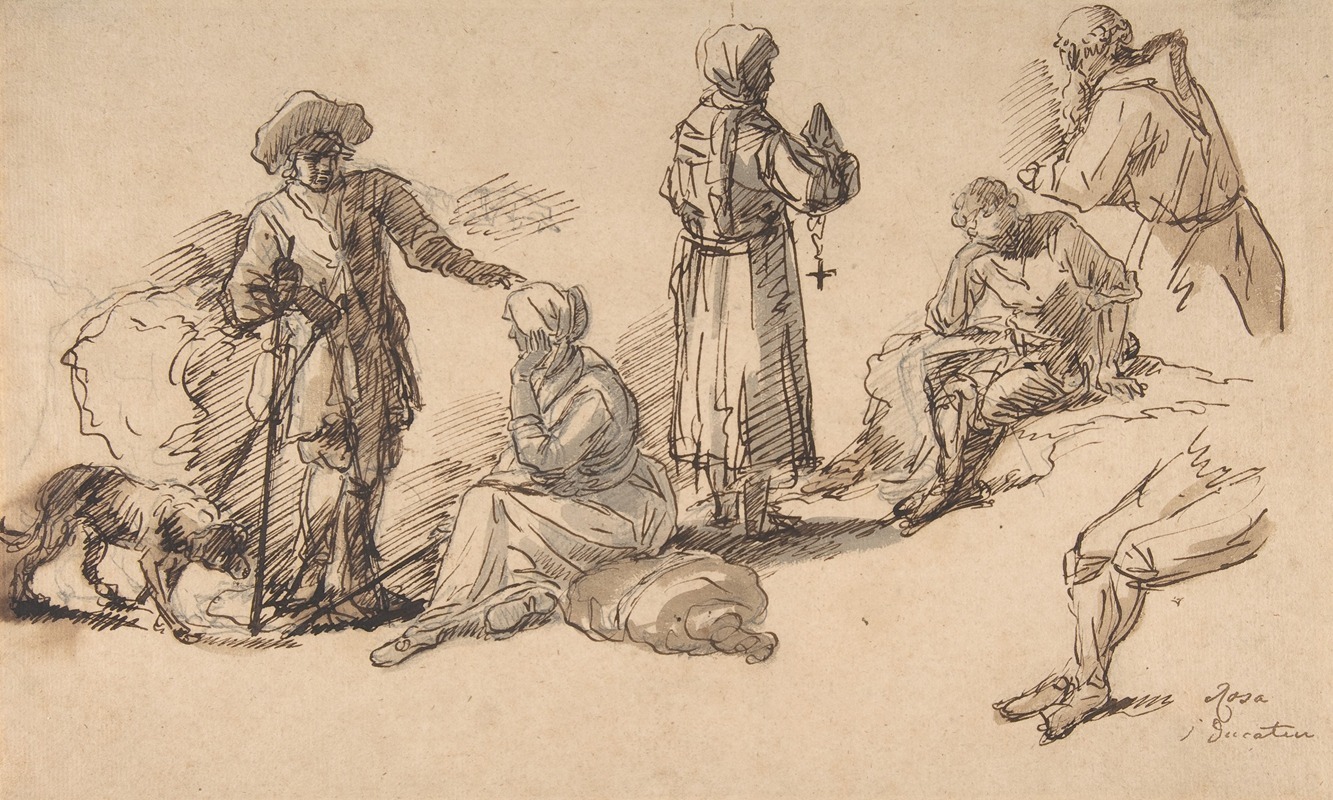
Studies for Standing and Seated Figures
A hand-painted replica of Salvator Rosa’s masterpiece Studies for Standing and Seated Figures, meticulously crafted by professional artists to capture the true essence of the original. Each piece is created with museum-quality canvas and rare mineral pigments, carefully painted by experienced artists with delicate brushstrokes and rich, layered colors to perfectly recreate the texture of the original artwork. Unlike machine-printed reproductions, this hand-painted version brings the painting to life, infused with the artist’s emotions and skill in every stroke. Whether for personal collection or home decoration, it instantly elevates the artistic atmosphere of any space.
Salvator Rosa (1615–1673) was an Italian Baroque painter, poet, and printmaker, known for his unorthodox and extravagant style. One of his notable works is "Studies for Standing and Seated Figures," which exemplifies his skill in capturing human form and movement through detailed sketches.
"Studies for Standing and Seated Figures" is a drawing that showcases Rosa's ability to depict the human body in various poses. The work is a collection of figure studies, likely created as preparatory sketches for larger compositions or as exercises to refine his understanding of anatomy and posture. These studies were essential for artists of the Baroque period, who often sought to achieve dynamic and realistic representations of the human figure.
The drawing features multiple figures in different positions, both standing and seated. Each figure is meticulously rendered, highlighting Rosa's keen observation and mastery of line work. The figures are depicted with a sense of movement and fluidity, characteristic of Rosa's style, which often emphasized dramatic expression and emotional intensity.
Salvator Rosa's approach to figure studies was influenced by his diverse interests and experiences. He was not only a painter but also a poet and actor, which contributed to his understanding of drama and expression. His works often contained elements of the fantastical and the sublime, and his figure studies were no exception. They were not merely academic exercises but also explorations of character and emotion.
Rosa's drawings, including "Studies for Standing and Seated Figures," were highly regarded by his contemporaries and later generations of artists. They provided valuable insights into his creative process and his approach to composition and form. These studies were instrumental in the development of his larger works, where he often depicted historical, mythological, and allegorical scenes with a unique blend of realism and imagination.
The exact date of creation for "Studies for Standing and Seated Figures" is not well-documented, but it is believed to have been produced during the mid-17th century, a period when Rosa was actively engaged in both painting and drawing. The drawing is executed with pen and ink, a medium that allowed for precise and expressive lines, suitable for capturing the nuances of human anatomy.
Today, "Studies for Standing and Seated Figures" is appreciated not only for its artistic merit but also for its historical significance. It offers a glimpse into the practices of Baroque artists and the importance of figure studies in their work. The drawing is part of various collections and has been studied by art historians and enthusiasts who seek to understand Rosa's contributions to the Baroque movement.
In summary, "Studies for Standing and Seated Figures" by Salvator Rosa is a testament to the artist's skill and creativity. It reflects his deep understanding of the human form and his ability to convey movement and emotion through drawing. This work remains an important piece in the study of Baroque art and continues to inspire admiration for Rosa's artistic legacy.





